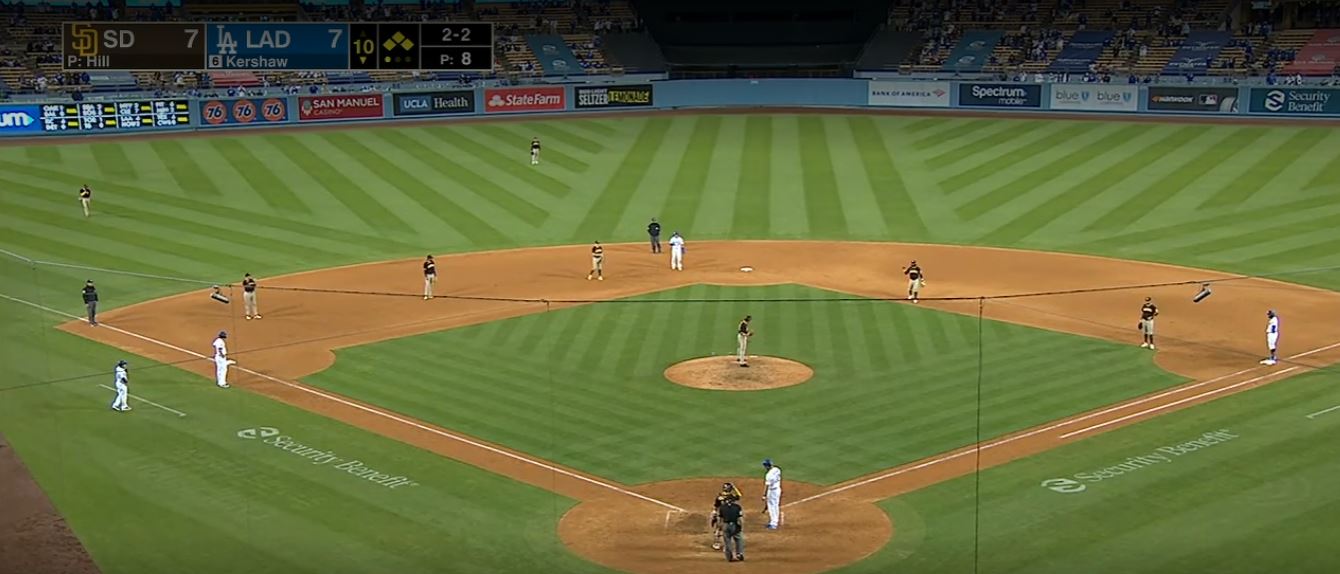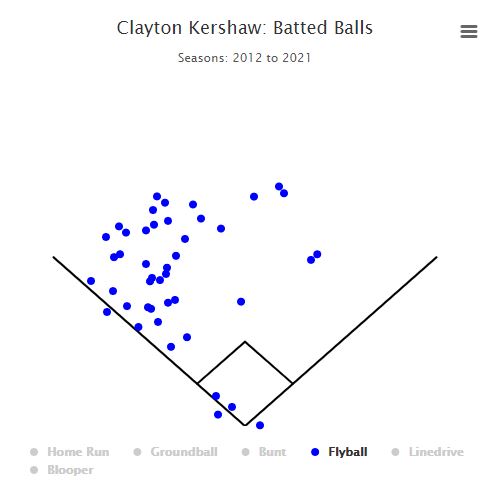Jayce Tingler, Successful Meddler
The intentional walk is, in my opinion, the most overused tactic in baseball. If you explained it to someone who had just learned the rules, they’d be confused. “The object of the game is to get runners around all the bases to home plate, right?” they’d ask. “You’re purposefully putting a runner partway around those bases? Does his run somehow not count?”
The run does count, and intentional walks are generally a great way to help your opponent score. Given that “helping your opponent score” is a bad way to win baseball games, intentional walks are mostly bad. Thanks for coming to my TED talk.
For decades, managers have intentionally walked dangerous batters. Sometimes it makes sense. Often, it doesn’t. Inevitably, though, the siren call of doing something, doing anything at all, to affect one’s own destiny leads managers astray. It’s an understandable impulse. Who among us, given the choice between doing literally nothing and taking some action to affect the outcome, would pick doing nothing? Since being a manager is largely about purposefully doing nothing when you could instead be doing something, I totally get why over-managing still persists.
Still, not every intentional walk is bad. Not every run is created equal, and there are certainly situations where the tactical advantage of choosing a different batter to face is worth more than the cost of an extra baserunner. Jayce Tingler called for two consecutive intentional walks on Sunday night in a win over the Dodgers, and they actually made sense. That calls for a celebration, as well as an explanation of why these particular walks were sound.
Let’s set the scene: 7-7 in the bottom of the 10th inning. After a Justin Turner groundout, the Padres were in a pickle: Corey Seager stood on third base, 90 feet away from ending the game, with Max Muncy and Chris Taylor due up next. Tim Hill, a sidearming lefty, had no room for error; with no double play in order, there weren’t many good outcomes left.
Facing Muncy can be a nightmare, but Hill had one ace in the hole: he didn’t care if Muncy walked. Muncy’s greatest skill is his discerning batting eye; since joining the Dodgers in 2018, his 21% chase rate is a top 10 mark in baseball. That feeds a gaudy 16% walk rate, and it also feeds his power, because pitchers need to challenge him in the zone to avoid free passes. He’s not a particularly great contact hitter, but he doesn’t have to be — so many of his swings are in the zone that he runs an average strikeout rate despite extreme patience.
Hill started with a slider low — Muncy took. He followed with a fastball that missed high, and Muncy passed once again. At this point, the math isn’t particularly necessary; Tingler decided that a strikeout was vanishingly unlikely, while Hill getting a piece of the plate and Muncy putting it in the outfield was comparatively probable. A semi-free pass followed; the last two balls were intentional.
At this point, the tough decisions started. Chris Taylor was due up next, and most contact was going to be trouble for the Padres. Seager isn’t a burner, but non-force plays at the plate are a dicey proposition. A double play would theoretically solve the problem, but alas: Taylor is a noted fast boy. His average 4.37 average home-to-first time is the second-fastest on the Dodgers this year (behind lefty Zach McKinstry). In his career, he’s grounded into double plays 20% of the time when hitting a grounder in a double play situation, markedly below the league average of 32%.
What’s worse, he doesn’t hit all that many grounders, and even fewer against lefties in his career. That means we need to consider fly balls, and the results there also aren’t great. Using calculations from this thread, we can figure out the farthest an outfielder can range and still catch the ball. Seager’s 90 foot running splits clock in at roughly four seconds, so the Padres would have four seconds to get the ball home and make a tag. Per Tango’s research, we know that the gather/throw and catch/tag take roughly 1.2 seconds combined. That leaves 2.8 seconds for the ball in flight.
That works out to a 262-foot breakeven — balls hit further than that will allow Seager to score. Roughly 70% of Taylor’s tracked fly balls have flown that far — even if we downgrade it to 65% to account for untracked pop ups, the math doesn’t look great. If we assume that line drives turn into runs 87% of the time (87% of his line drives were either over 262 feet or fell for hits), that paints a grim picture:
| Result | Odds of Happening | Odds of Run Scoring |
|---|---|---|
| BB | 9.5% | 0.0% |
| K | 25.0% | 0.0% |
| GB | 30.8% | 70.0% |
| LD | 13.8% | 87% |
| FB | 21.0% | 65.0% |
Roughly speaking, there’s an even chance of getting Taylor out or losing. We have one more data point — the next batter was Clayton Kershaw, pinch hitting in the pitcher’s spot. In his career against lefty pitching, he had a .178 OBP, which we’ll use without adjustment — guessing Kershaw’s exact line against Hill is beyond what I feel like doing today. Given that basically none of that is walks — 2.8% — we come up with a 54.8% chance of the Padres losing this inning if they pitch to Taylor.
Tingler went with another option: he intentionally walked Taylor to bring Kershaw to the plate. This made those walks matter — 2.8% of the time, the game would end on the spot — but it also massively changed the outcomes on balls in play. Did they improve the numbers enough to offset those extra walked-in runs? Let’s do a little math and find out.
Kershaw doesn’t hit many fly balls. He’s hit 155 balls harder than 35 mph (a threshold I set to exclude bunts) in the Statcast era, and 102 have been on the ground. Only 22 of the remaining 53 got 260 feet from the plate. Right away, the odds look better for the fielding team. Of course, Tingler tilted the odds further in their favor with a shift, something the Padres have excelled at this year:

It’s beyond me to run the math on how likely a grounder is to find a hole in a five-man infield with Kershaw’s punching, opposite-field swings (the Padres moved into this shift after two consecutive swings he was extremely late on). Given Kershaw’s slow-footedness, though, this strikes me as a probable double play situation, and a very likely force at home in any case; let’s say 45% double plays and 35% force outs at home plate.
I ran the same numbers for fly ball distance that I ran for Taylor, then gave Kershaw a slight bump due to the lack of a right fielder. That bump might be kind; here are all of Kershaw’s fly balls since 2012:

In any case, that leaves an outcome grid like this:
| Result | Odds of Happening | Odds of Run Scoring |
|---|---|---|
| BB | 2.8% | 100.0% |
| K | 28.0% | 0.0% |
| GB | 43.1% | 20.0% |
| LD | 8.9% | 80.0% |
| FB | 13.5% | 50.0% |
If we assume a .290 OBP for DJ Peters, the man on deck (an approximation based on his projections, Hill’s projections, and a platoon split), that works out to a 39.7% chance of the Padres losing the game in this inning. If you’ll recall from above, that number was 54.8% if they pitched to Taylor.
If we assume the game is 50/50 should the inning end tied, that means the intentional walk took the Padres from 22.6% to 30.2% to win the game. That’s a massive swing — even accounting for my approximations. Most managerial decisions swing the game by a fraction of a percentage point, maybe one or two if they’re lucky. Tingler’s aggressive walks were the rare case where doing something is not just acceptable but great. The Padres won the next inning, but the Dodgers might have gotten away with it, if it weren’t for that meddling manager — the rare time where I use “meddling” as a compliment.
Ben is a writer at FanGraphs. He can be found on Bluesky @benclemens.

Glad this got the full write up it deserved!